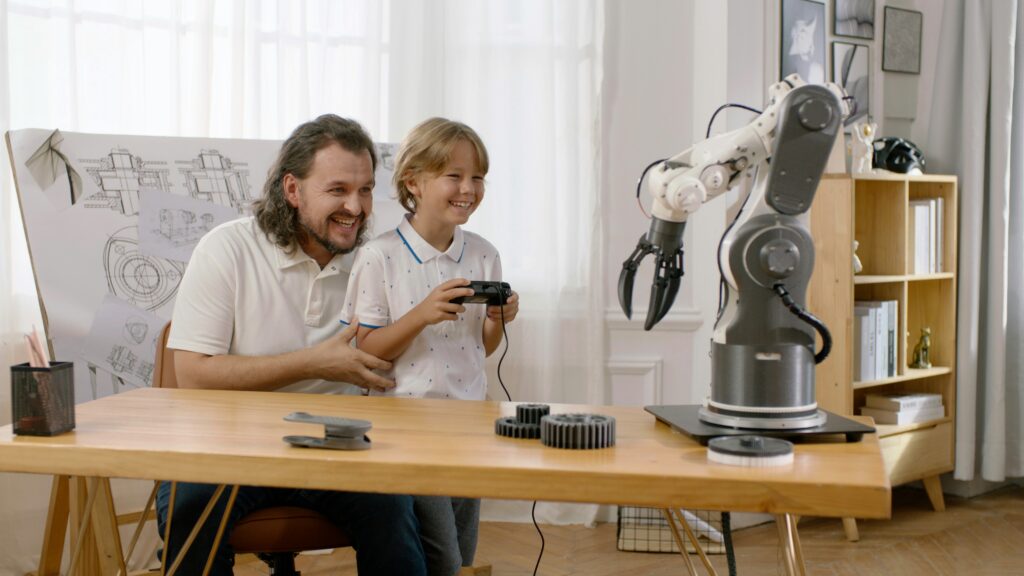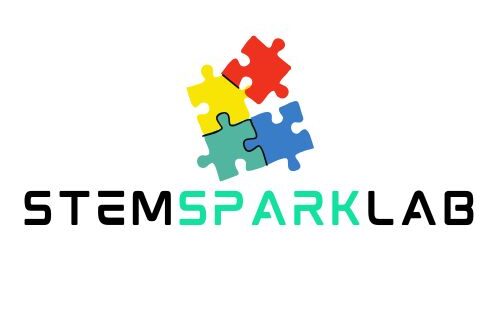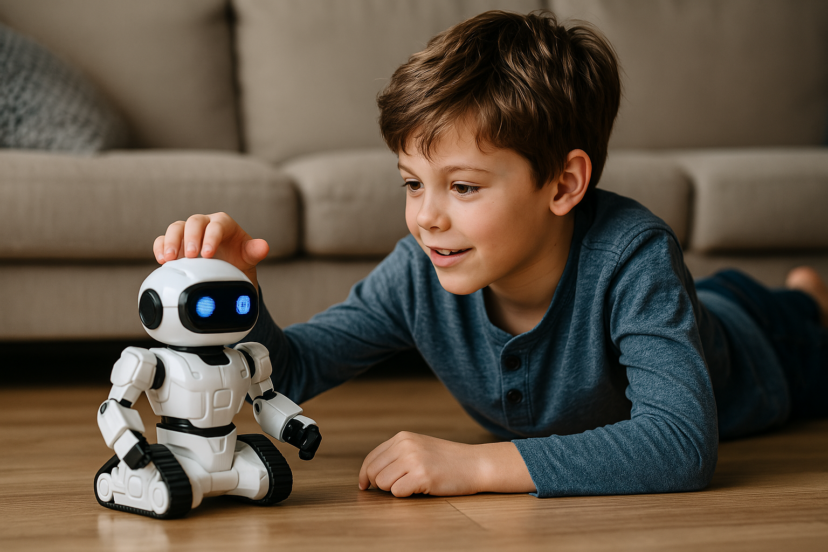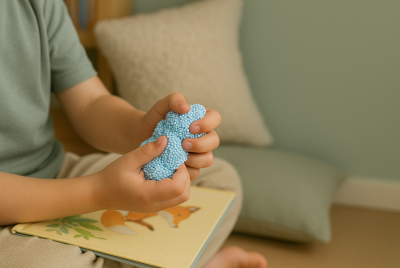How Robots for Kids Are Shaping the Future of Learning and Play
We may earn a commission for purchases made using our links. Please see our disclosure to learn more.
Have you ever stopped to think about how much technology has changed the way kids learn and play? If you haven’t, you’re not alone! But trust me, the robots designed for kids today are transforming how young minds are growing and shaping the future of education. These aren’t just the mechanical, stiff robots you might have seen in old-school sci-fi movies. Instead, these robots are fun, interactive, and packed with ways to teach kids important skills they’ll need for tomorrow. Let’s dive into how these robots are changing the game.
The Rise of Robots for Kids
The idea of kids playing with robots isn’t just some far-off future anymore—it’s happening right now! Over the last few years, the tech industry has made robots more affordable, accessible, and downright fun for children. You’ve probably seen some on your social media feeds or in toy stores. Robots for kids are being designed to be interactive and educational, sparking curiosity in young minds. And believe me, that’s just the start. These robots are shaping how kids think, learn, and play, opening doors to skills that would have seemed like a stretch a decade ago.
What Makes Robots for Kids Different?
Okay, so you might be wondering, what makes these robots so different from anything we’ve seen before? First off, these robots are designed with a kid’s world in mind—colorful, easy to use, and full of interactive features that make learning feel like a game. We’re talking robots that don’t just walk or talk, but actually help teach coding, math, science, and even problem-solving. It’s like having a mini tutor, but way cooler and way more fun. Kids are no longer just playing with toys; they’re interacting with something that teaches them real-world skills.

A New Way of Learning
Let’s be real for a second—learning can be boring if it’s just textbooks and tests, right? But what if kids could learn while having a blast? That’s where robots come in. These robots aren’t just toys; they’re teaching tools. Whether it’s coding, math, or basic science, robots break things down in a way that’s fun, visual, and exciting. The best part? Kids get to experiment, make mistakes, and learn at their own pace. It’s a whole new kind of learning experience that feels more like play than schoolwork.
Encouraging Creativity and Imagination
One of the coolest things about robots for kids is how they open up new doors for creativity. You know how kids love to build and create with their LEGO sets? Robots do the same thing—only with way more technology. Kids can design, program, and modify robots to make them do whatever they imagine. It’s like giving them the keys to a mini robotics lab where the only limit is their creativity. They’ll have to think critically, solve puzzles, and come up with new ideas. And guess what? All of that translates into real-world skills, too.
The Role of Robots in STEM Education
If you’ve been paying attention, you’ve probably heard a lot about STEM education (Science, Technology, Engineering, and Math). Well, robots for kids are becoming a big part of that picture. These little guys don’t just teach kids how to have fun; they also teach kids how to understand complex concepts in engineering, programming, and design. Robotics brings STEM to life in a way that textbooks just can’t. It’s hands-on, it’s interactive, and it’s a perfect introduction to careers that will likely be in demand for years to come.
Enhancing Cognitive and Motor Skills
Playing with robots is more than just pushing buttons—it’s helping kids develop important cognitive and motor skills. Think about it: kids need to solve problems to make the robot do what they want. They need to plan, think ahead, and make quick decisions. Plus, using the hands-on controls helps them work on fine motor skills, like hand-eye coordination. So, in a way, every time a kid programs a robot or solves a challenge, they’re also exercising their brain and sharpening those motor skills.
Teaching Coding and Programming in a Fun Way
If you’ve ever tried to teach a kid how to code, you know it can seem a little intimidating, right? But robots make coding so much more approachable. Picture this: kids learning to code by playing with a robot that responds to their commands. They can learn programming languages through simple drag-and-drop blocks or visual cues—no advanced degrees required! It’s all about making the learning process feel like a game, and robots do it perfectly. They teach kids the foundations of coding without the stress, all while making sure they’re having fun.
Making Learning Personal and Interactive
What’s better than learning something new? How about learning it your way? That’s one of the best things about robots for kids. These robots adapt to a child’s learning pace, giving personalized feedback along the way. Kids get to explore concepts at their own speed, making learning more effective and less stressful. Unlike traditional methods, which often have a one-size-fits-all approach, robots allow children to learn in a way that suits their individual style.
Building Emotional Intelligence
It’s not just about coding and math—robots can also teach kids emotional intelligence! Some robots are designed to respond to a child’s emotional cues, like voice tone or facial expressions. Imagine a robot that can sense when your child is upset and offers comforting words or activities to cheer them up. It sounds futuristic, but it’s happening now. These robots help kids build empathy, learn about emotions, and improve their social skills—all of which are essential for their overall development.
Robots for Kids: A Social Experience
Did you know that robots can actually help kids work on their social skills? Many robots are designed to be interactive, encouraging kids to collaborate and solve problems together. Think about it: kids working together to program a robot or complete a challenge. It’s a great way to teach teamwork, cooperation, and communication—all while having fun! These robots make learning social and dynamic, helping children develop skills they’ll use for the rest of their lives.
Safety Features in Robots for Kids
As a parent, safety is always top of mind, right? Well, robots designed for kids are built with safety in mind, too. From soft materials to simple controls, these robots are designed to be safe for little hands. Many also come with parental controls, so you can monitor how your child interacts with the robot and ensure they’re using it appropriately. It’s all about giving parents peace of mind while still offering a fun and educational experience.
The Future of Robotics in Education
Looking ahead, robots are going to become even more integrated into our children’s education. Imagine classrooms where robots aren’t just assistants—they’re part of the curriculum, helping students learn through interactive play. As technology continues to improve, we might even see robots becoming an everyday part of school life. From personalized learning to engaging problem-solving tasks, robots are bound to be at the forefront of education for years to come.
How Do Robots for Kids Help with Problem-Solving?
You know that feeling when you finally solve a problem that’s been bugging you all day? Kids can experience that, too, and robots are a big part of making that happen. Whether it’s programming a robot to navigate an obstacle or figuring out how to make it perform a specific task, robots push kids to think critically and solve problems. Every mistake teaches them something new, and every success builds confidence. It’s like giving them a mini experience of problem-solving in the real world.
Robots and Children with Special Needs
Robots can be especially helpful for kids with special needs. For example, some robots are designed to help children with autism practice social interactions in a safe, low-pressure environment. Others help kids with speech delays improve communication skills by prompting them to respond and engage. It’s all about using robots to create an environment where kids can feel comfortable learning and growing at their own pace.

What Parents Should Look for in Robots for Kids
Thinking about getting a robot for your child? Here’s a quick checklist: First, make sure it’s age-appropriate. A toddler will need something simple, while older kids might enjoy more complex robots with coding options. Next, consider the robot’s educational value. Does it teach anything useful, like coding, creativity, or problem-solving? And finally, look at safety features and durability—robots should be built to last and easy for kids to use without supervision.
Popular Robots for Kids
Looking for some robot inspiration? Here’s a list of popular robots that have been making waves in the world of kids’ education:
- LEGO Mindstorms Robot Inventor Kit – Great for kids who want to build and program their own robots.
- Sphero Mini – A small, app-controlled robot that’s perfect for learning coding and programming basics.
- Dash & Dot Robots – Fun, interactive robots that teach younger kids basic coding skills.
- Botley 2.0 – A screen-free robot for younger children, introducing them to coding through hands-on play.
- Cozmo – A robot with personality, perfect for teaching coding in a way that’s engaging and entertaining.
The Impact of Robotics on Children’s Learning: Key Studies
Recent research highlights the significant benefits that robotics education can offer young learners, shaping the future of STEM education. One key study, The Impact of Early Robotics Education on Students’ Understanding, explores how introducing robotics design and programming to students at an early age enhances their understanding of complex concepts while sparking an interest in potential career paths. The study demonstrates that early exposure to robotics can increase engagement and improve problem-solving skills. Another important review, A Review on the Use of Robots in Education and Young Children, analyzes the application of robots in early childhood education and concludes that these educational tools are beneficial for developing cognitive and motor skills, as well as fostering creativity and critical thinking in young learners. Both studies underscore how educational robots can play a pivotal role in transforming learning environments for children.
Summary
Robots for kids are more than just toys—they’re changing the way kids learn, play, and develop skills. By introducing children to coding, STEM concepts, and even emotional intelligence, these robots are helping kids grow in ways traditional toys simply can’t. As technology continues to advance, the future of learning will look more like play, and robots will be at the heart of it all.
FAQs
- What age group is suitable for robots for kids? Robots for kids are designed for various age groups, from toddlers (who can interact with simple robots) to older kids (who can enjoy coding and more complex programming tasks).
- Are robots for kids safe? Yes! Robots for kids are built with safety in mind, using soft materials and simple controls. Many also feature parental controls for extra peace of mind.
- Do robots for kids help with STEM learning? Absolutely! Robots are a great way to introduce kids to STEM concepts, making science, technology, engineering, and math fun and interactive.
- How can robots help children with special needs? Some robots are designed specifically to help children with special needs, including autism, by providing social interaction and emotional cues in a safe, engaging way.
- Can robots for kids help with problem-solving? Yes! Robots encourage kids to think critically and solve problems by providing challenges that require creative solutions. Every task helps them build important problem-solving skills.




